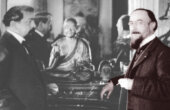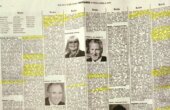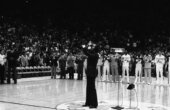Expecting the Unexpected: Wagner and the Language of Longing
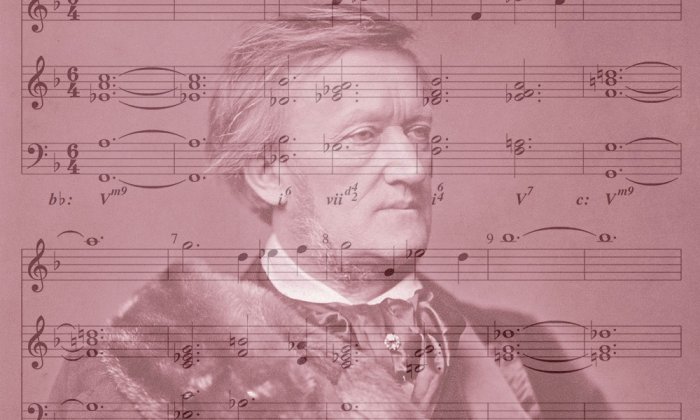
Two months after the terrorist attacks of September 11, 2001, Swiss police carried out a dawn raid at a hotel in Basel. There they arrested a suspected French terrorist who had publicly advocated the bombing of the Paris Opera. The suspected terrorist was 76-year-old composer and conductor Pierre Boulez. In a 1967 interview, Boulez had infamously suggested that “the most elegant solution to the problem of opera is to blow up the opera houses.” Not known for their sense of humor, the Swiss police were having trouble distinguishing between intemperate avant-garde rhetoric and incitement to commit terrorism. An aging artist like Boulez must have felt truly honored.
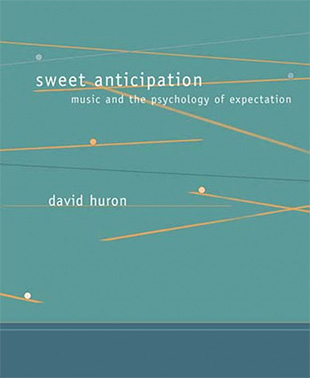
By any yardstick, the 20th century was a remarkable period in music history. The century witnessed an explosive growth in popular music. Major genres, such as jazz, Broadway, blues, and rock, emerged. As the century advanced, there was an increasing awareness of and appreciation for the musical riches of non-Western cultures. Unprecedented numbers of Westerners were exposed to the musics of India, China, Japan, Indonesia, Africa, and other regions. At the same time, technological developments transformed the experience of music listening. Prior to the introduction of sound recording and broadcasting, music had been experienced as a fleeting pleasure to be savored in relatively infrequent concerts or domestic soirées. By the end of the 20th century, music had become a soundtrack to daily life.
In addition to these changes, Western art music experienced a dramatic and profound transformation. Sometime between 1910 and 1920, Western art music took a distinctly modernist turn. Nearly every established element of music was probed, explored, and extended — from tuning systems and scales to performance venues and playing techniques; from instruments and timbres to political and social agendas. Melody, harmony, rhythm, timbre, and form were stretched in a multitude of directions. The advent of modernism raises special challenges for understanding the role of expectation in musical experience.
Although modernism is typically associated with the early decades of the 20th century, its roots extend back to the late 19th century. Many historians regard Richard Wagner as the principal precursor of musical modernism. Not content with writing the music of his time, Wagner proposed that his job as a composer was to write Zukunftsmusik — the music of the future. By shifting the musical emphasis from the present to the future, Wagner endorsed the growing idea of an advanced guard or avant-garde. With the turn of the century, the main figures of musical modernism emerged: Debussy, Satie, Stravinsky, Bartók, Schoenberg, Webern, Prokofiev, Varèse, Messiaen, Cage, and many others.
Especially in his later works, Wagner did everything in his power to avoid, disguise, elide, suspend, or delay cadential closure.
An enormous body of arts scholarship has addressed the phenomenon of “modernism.” In characterizing modernism, many themes have emerged. One strain of modernism focuses on themes such as progress, novelty, technology, and invention. This is essentially a future-oriented, often overtly optimistic strain. A second strain of modernism is somewhat darker, emphasizing alienation, isolation, parody, irony, absurdity, and fragmentation. The common element to be found in both the optimistic and pessimistic strains of modernism is the effort by artists to “go against the grain” — to snub orthodoxy and replace it with the unorthodox.
The French painter Georges Braque was only one of many artists who declared that art should disturb. It was an idea that reverberated throughout avant-garde musical circles. There was a widespread feeling that the arts were too tame. On the one hand, the arts needed to better divorce themselves from the banality of popular entertainment. On the other hand, the arts needed to be freed from the polite refinements of bourgeois respectability. Pierre Boulez was not the only artist to propose radical solutions.
If one’s goal is to disturb listeners, there are many ways to achieve this. Music scholars have drawn attention to the increased use of dissonance in modern music. Certainly, one way to go against the grain is by adding more of the auditory spice we call dissonance. A more radical approach might reverse the musical roles of consonance and dissonance — using consonance where one would normally use dissonance, and using dissonance where one would normally use consonance. In the language of egalitarian politics, dissonance could be “emancipated.” Dissonance could be set free from its formerly courteous constraints.
To be sure, the 20th century saw a significant increase in the proportion and variety of dissonant sonorities. However, I think the emphasis on dissonance as a defining character of musical modernism detracts from a more fundamental characteristic. The essence of unorthodoxy is to be found in the psychology of expectation. To be unorthodox is to fail to conform to what is expected. Norms are challenged by confronting and reversing established expectations.
Long before Wagner, composers had endeavored to thwart listeners’ expectations in various ways, such as through musical devices like the deceptive cadence. However, prior to the modern period, these compositional efforts to thwart expectations were momentary, episodic, and fleeting. With Wagner, we see what appears to be the first sustained effort to systematically thwart expectations — to consistently not give listeners what they expect. I like to refer to this disposition as the contrarian aesthetic. One might call it a “negative” or “anti” aesthetic, but I prefer the word “contrarian” for two reasons. First, “contrarian” has more positive connotations than these other designations, and secondly, “contrarian” better evokes the resolute, persistent, and often stubborn character of modernist composers like Wagner. Going against the grain is sure to provoke criticism — even anger or revulsion. No one can sustain such a revolution without a tenacious, iconoclastic, or contrarian personality.
In the music of Wagner, this contrarian aesthetic is most evident in the simple cadence — formulaic passages that are used to bring a musical phrase to an end. Especially in his later works, Wagner did everything in his power to avoid, disguise, elide, suspend, or delay cadential closure. One might say that Wagner wrote “contra-cadential” music. By looking in detail at the musical organization we will be able to see how the psychology of expectation accounts for the betrayal felt by many listeners of the time, and why his music continues to confound many present-day listeners. At the same time, the psychology of expectation will help us understand how some listeners have adapted to the contrarian aesthetic and have internalized the same contrarian principle as a basis for auditory expectation.
Wagner’s Contracadential Music
Richard Wagner (1813–1883) wrote philosophy, literature, chamber music, and poetry, but primarily, he composed operas. In Wagner’s lifetime, his music was both loved and reviled. He attracted both a fervent audience of devotees and a choleric army of critics. Even today, his music tends to polarize listeners for both musical and political reasons. (For all his genius, Wagner was a vehement antisemite.) Scholars have found Wagner to be an especially compelling subject for study: Few musicians can claim to have received a comparable amount of scholarly attention.
Wagner takes personal desires and raises them to cosmic significance.
Music scholars have pointed to a number of characteristic aspects of Wagner’s music. These include an expressive chromatic language, rich orchestration, a preference for continuous melody, dramatic dynamic gestures, and a unique system of using short musical motives to represent specific characters or ideas. But commentators seem to have been most happy when describing their emotional responses to Wagner. Wagner’s music is variously described as expressive, passionate, or intense. My favorite description, however, is John Freeman’s characterization of Wagner’s musical language as “the language of longing.” There are at least two ways to interpret this phrase. One interpretation views “longing” as a quintessentially “romantic” emotion. For some, Wagner represents the apex of romanticism. His libretti are often luridly passionate stories where love, betrayal, and power are intermingled. Wagner takes personal desires and raises them to cosmic significance.
There is also a second, more perceptual interpretation of Freeman’s phrase. The “language of longing” also draws attention to the yearning qualia that are so often evoked by Wagner’s music. This yearning sensation is evident even when listeners are clueless about the programmatic stories. The longing or yearning character of his music can be traced in large part to Wagner’s chromatic harmony, and in particular, to his manipulation of classical cadential gestures.
Some of Wagner’s works employ fairly conventional cadences. Examples include “Tannhäuser” and “Lohengrin.” But much of Wagner’s music displays consistently unconventional cadential treatments. Where other composers were content to rely on existing cadential clichés, Wagner used cadential clichés as the raw material for something far more radical.
As I document in my book, psychological tension can be magnified by delaying expected outcomes. The effect of delay is greatest when the expectations are strongest. Since cadences are among the most predictable musical structures, cadences provide fruitful opportunities for delaying tactics, and so delay-induced tension. Wagner did not originate the delayed cadence, but he certainly made extensive use of it.
In the classical style, certain chords exhibit a strong tendency to be followed by other chords. Examples include the dominant seventh, the dominant minor ninth, the diminished seventh, the augmented sixth, and the tonic 6–4 chords (don’t worry about the details here). From a statistical standpoint, these chords all exhibit the most constrained first- and higher-order probabilities. We might call them tendency chords. Wagner’s music is dominated by such chords, and their tending qualities weren’t merely limited to his 19th-century European listeners, but are experienced by modern audiences as well. The phenomenal experiences evoked by Wagner’s music are closely linked to his use of statistical patterns of tendency, while avoiding the statistical patterns related to repose or closure.
The notation below shows a simple example from the overture to Wagner’s “The Flying Dutchman.” The theme leads to a loud (fortissimo) diminished seventh chord which is unexpectedly followed by silence. When the music resumes following the grand pause, the diminished chord continues as an arpeggiated figure in the strings, and continues for another six measures before it is finally resolved.

The importance of the delayed cadence in Wagner is most easily observed by looking at his use of rests. In most music (both popular and classical), rests are most likely to appear immediately after a cadence. As in speech, momentary rests commonly mark the boundary between the end of one phrase and the beginning of the next. Yet in Wagner, notated rests commonly occur, not as post-cadential moments of repose, but in the middle of the cadence itself — typically at the moment when anticipation of some resolution is greatest. In other cases, Wagner dispenses with the resolution entirely. He simply stops mid-cadence, pauses, and then goes on to a new musical idea as though a final resolving chord were unnecessary. In effect, he abandons the cadence.
Sometimes, an “abandoned cadence” involves an elided phrase where the end of one idea simultaneously marks the beginning of a new idea. The excerpt below shows a typical example from Wagner’s “Tannhäuser.” Here, the last note in a solo clarinet passage coincides with the first note of a new motivic idea featured in the violas. The underlying harmony reinforces the failure to bring clear closure before proceeding with the next idea. For readers possessing a technical musical background, we see a classic sequence of strong tendency chords: a German sixth leading to a tonic 6-4 chord, followed by a dominant seventh chord: all expectations point to a resolution on a tonic F-sharp major chord. But Wagner adds the minor seventh to the expected resolution, causing the tonic to act as a dominant seventh chord (another tendency chord) that launches the new musical motive. You thought Uncle Richard had just finished uttering the last word in a sentence, but it turned out to be the first word of his next sentence.

Apart from delayed, elided, abandoned, and thwarted cadences, Wagner sometimes avoids cadences altogether. It’s worth listening to the Prelude to act 3 of “Parsifal.” The Prelude has a duration of roughly five and a half minutes, yet there is not a single cadence or cadence-like moment anywhere. The Prelude does not even end with a cadence: it simply “morphs” into the first scene of the final act. Despite the absence of points of repose, Wagner makes use of cadential clichés as the basis for his harmonic writing. The music consists of tendency chord after tendency chord, after tendency chord, with nary a resolution. There is no pause or catching of breath — no effort to close an idea or delineate a group of notes. It is just one moment in an endless progression of seething harmonies.
One might be tempted to call Wagner’s music “noncadential” or even “acadential.” But the cadence is not simply an object of cavalier disregard. On the contrary, Wagner displays a consummate mastery of the cadential language inherited from the composers of the classical style. His pre-cadential harmonies follow the most stereotypic patterns to be found in Haydn, Mozart, and Beethoven. Wagner seems to love every aspect of the classical cadence except three: the resolution, the persistent reinforcing of a single key area, and the tendency to interrupt the musical flow. In short, Wagner is attracted to the strong “tending” quality of cadential patterns, but repulsed by the evoking of closure or repose. He makes constant use of cadential elements while pointedly avoiding the actual cadence — the resolution. It would not be inappropriate to characterize this compositional practice as contracadential.
The passages described above are isolated examples rather than a representative statistical sample of Wagner’s music. There are numerous works and passages that employ a more conventional cadential language. Nevertheless, the above examples reflect much of Wagner’s mature harmonic style. The examples are highly suggestive in light of what we know about the importance of statistical learning in auditory expectation. Wagner’s harmonic practice relies on those sequences in Western music that are the most clichéd and so evoke the strongest feelings of anticipation.
Wagner’s music “yearns.” It is the music of hunger, rather than of fulfillment. It is music that leans and points, portends and implies, urges and compels.
The psychological effects of this way of composing are noteworthy. For over a century, listeners have been remarkably consistent in describing how Wagner’s music makes them feel. The feeling of “endless longing” and “unsettled yearning” can be directly attributed to thwarted expectations — expectations that can be traced to implicit statistical learning from environmental exposure. Wagner sought out those musical patterns that most evoke strong expectancies. Using delay and misdirection, he sought to heighten the tension that accompanies strong feelings of anticipation. At the same time, he added to the intensity of the experience by avoiding points of closure or repose.
Wagner’s music “yearns.” It is the music of hunger, rather than of fulfillment. It is music that leans and points, portends and implies, urges and compels. To the extent that Wagner avoids cadential resolutions, it is also music that is unrequited. It is music that tempts and titillates, denies and frustrates, deceives and thwarts. Not everyone is comfortable sitting on the edge of their seats. But no Western-enculturated listener can deny the intensity of the Wagnerian experience.
Contrarian Listening
Apart from the organization of cadences in Wagner, we’ve conducted formal statistical analyses of rhythms in the music of Igor Stravinsky, and tonal implications in the 12-tone rows used in Arnold Schoenberg’s music. For Western-enculturated listeners, it turns out that many of the most famous rhythmic patterns in Stravinsky’s music are less probable than would be expected from purely random metrical rhythms. And similarly, for Western-enculturated listeners, it turns out that Schoenberg’s 12-tone rows exhibit fewer internal tonal implications than would be expected from purely random tone rows. We might say that many passages in Stravinsky’s music are contrametric and that much of Schoenberg’s music is contratonal (rather than atonal — a term Schoenberg disliked).
What’s interesting is that perceptual research shows that listeners roughly divide into two groups. Many listeners continue to hear the music of Wagner, Stravinsky, and Schoenberg with the expectation that the music will conform to the statistical tendencies they have absorbed from long exposure listening to conventional Western music. For these listeners, the constant thwarting of their expectations predictably leads to feelings of confusion and frustration. However, the research also shows that for many listeners who are familiar with modernist music, their musical expectations are reshaped so they come to expect the reverse of traditional musical conventions. In short, it is possible to learn to expect the unexpected. Many aficionados of modern music have learned to internalize the contrarian aesthetic, and as a consequence, the musical experience is less vexing and very often enjoyable.
If, as several modernist artists argued, the goal was to disturb audiences, then some of the techniques used by composers like Wagner (with respect to cadences), Stravinsky (with respect to rhythm), and Schoenberg (with respect to tonality) are psychologically consistent with this goal. Even if modernist composers intended to pursue different musical goals from their predecessors, they still resorted to using the same psychological tools in order to evoke particular experiences for their listeners. The fact that some listeners are able to internalize the contrarian organization and form repertoire-appropriate expectations is a hopeful sign for the future development of music. If we want music to be all that it can be, then such “advance guards” provide essential explorations.
David Huron retired as Head of the Cognitive and Systematic Musicology Laboratory at The Ohio State University in 2019. He is the author of “Voice Leading: The Science Behind a Musical Art” and “Sweet Anticipation: Music and the Psychology of Expectation,” from which this article is adapted.
